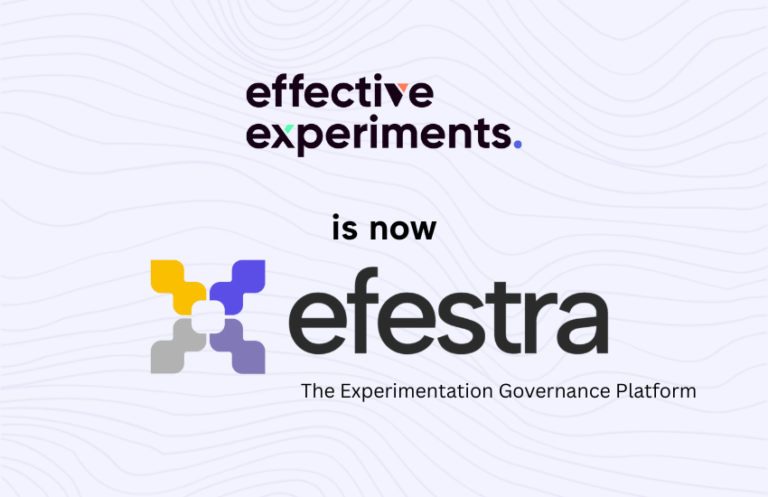There is a silent killer that threatens to destroy your optimization programme and all the work you have put into it.
You may think that the success of your optimization programme depends solely on the ROI it generates and for the most part, you will be right in thinking so. But that relies mainly on the organization’s ability to hire the right people for the job.
There is a different and more deadly killer of optimization programmes – the lack of organizational buy in.
Just because your company has invested in an optimization programme and hired a couple of optimization specialists doesn’t always mean that there is complete organizational buy in.
When other departments (or teams) such as developers or designers or even stakeholders aren’t giving top priority to the experiments you want to run, it shows there is a lack of buy in from these departments.
Why does this happen?
Let’s be honest. Every person in the organisation cares about themselves first. They have targets to meet and work that needed delivering yesterday. Your little experiment doesn’t pop up on their radar. It sounds harsh but it is true. In fact, your experiments and requirements is delaying them from getting their stuff done.
This often boils down to value. They simply don’t see the value of getting your checkout experiment ready for testing when they have to completely recode the checkout process.
Too often, experiments get left in limbo and ultimately optimization strategists start getting questioned over why their optimization programmes aren’t delivering. Simply put, this is a lose-lose situation for the well meaning optimizer and the company that isn’t getting the real benefits of experimenting.
Here are a few strategies to help make your case and get everyone else on board.
Educate
Try this. Ask this question to people in other departments – “Do you know what I do on a day to day basis”.
Chances are, they won’t know what you do or at best have a vague idea of what your day to day activities look like.
This is where education comes into play. Education is the key when it comes to demonstrating why you are important asset to helping the company achieve its growth goals. This does not have to be a bland lecture of what CRO is and what A/B testing is.
Rather, show them practical examples and how it involves your organization’s website. Give them data – how users are interacting and what their feedback is.
This will give them insights into the process and the logic behind it. They will also get to experience the real impact of A/B testing and why experimentation is important.
Involve
Use the opportunity to involve people in your CRO activities. This will make them feel part of the process.
Here are a few ways you can do this.
- Give them visibility of all experiments that you have planned to run or experiments that are currently running
- Ask them for their suggestions and ideas
- Share your results and learnings with them
Gamify
You may notice that there is a hesitation in getting involved and sharing ideas. This is perfectly normal. No one wants to come up with ideas that could have the potential of being laughed at by others.
The way to get around this is to gamify the process.

A recent article by Kate Leto on the Mind the product blog hit the nail on the head. In the article, she says that rather than asking for a hypothesis or an experiment idea, you should ask them for a bet.
She continues by saying “Some feel that in stating a hypothesis and sharing it publicly, they’re sticking their necks out and risking their reputation. After all, what if they’re wrong?! Others simply don’t feel like jumping through the hoops that their companies have established as part of their formalised approach to experimentation.”
Often, they may not know if their ideas are valid (even before they have suggested it) or they are not all too sure about the structure of a hypothesis.
Here’s what you should be doing to gamify the process
- Don’t put too much pressure on other departments to give you a hypothesis. Ask them to bet on an idea (and then you can develop that into a hypothesis)
- Give them clear visibility and updates on the impact of their ideas.
- Ask them to pick a winner on existing experiments
- Use a voting system or a leaderboard to make it a bit more competitive. Give out prizes
- Send out a monthly newsletter to show who won and what the leaderboard looks like
How Effective Experiments helps teams achieve better organizational buy in.
By now, you have some solid strategies and ideas to implement and I would strongly suggest that you do this asap.
At Effective Experiments, we knew from a very early stage that organizational buy in was crucial to the success of an optimization programme.
So we set about incorporating features into our CRO workflow platform that would help the optimization teams
Visibility
This is one of the core features of Effective Experiments. At any given point, the stakeholders, the optimization team or other team members can login and on the dashboard, view the exact statuses of their experiments, the pipeline as well as what is coming up.
The auto updating shareable roadmap gives users the ability to share it with other departments.
Results and reports can be accessed at any time.
The query engine gives the user the ability to quickly run a few queries and get all the experiments that match that criteria easily.
Collaboration
Another big aspect of running an optimization programme is how well you can keep everyone updated and allow them to collaborate with you.
Instead of using clunky spreadsheets, different systems and worst of all email, Effective Experiments customers use a single platform to discuss, share files and keep track of the experiments.
Not just that, they can also crowdsource ideas from other teams (or departments) and get them to vote on ideas. The leaderboard and points systems keeps everyone competitive.



